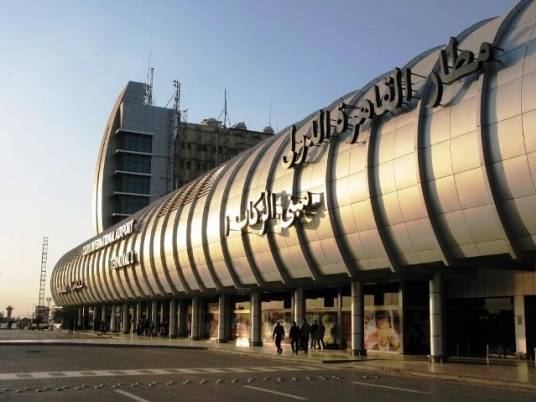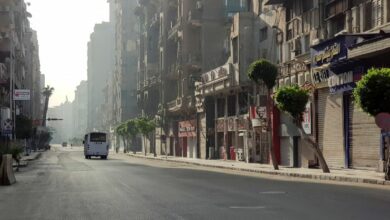A toxic combination is unfolding under the rule of the Muslim Brotherhood.
Its bid to take over state apparatuses and, more importantly, follow the former regime’s footsteps in oppressing and besieging the people’s right to expression is an attempt to suppress the revolution’s march toward radical democracy.
It is very clear that one of the main goals of the revolution, and one of its fiercest battles, is to regain and re-establish the public sphere.
The idea of the public sphere presupposes the freedoms of speech and the right to assemble, organize and protest. Individuals and groups of citizens have the aptitude to discuss, debate and negotiate their interests, and hence influence the decision-making process.
The public sphere is where political and social struggles are voiced and passed, where desire and passion are unleashed, and where differences are articulated in agonistic versus antagonistic forms. In a nutshell, the public sphere is where differences are maintained as differences and not dissent.
From a certain perspective, the Brotherhood and the state share a similar organizational structure, which some scholars term as “the tree structure.”
Tree structures are, by default, oligarchic, hierarchical and dichotomous. They presuppose a defined and specified rivalry between the ruler and the ruled, and work on the normalization and standardization of their subjects.
Dissent is often met with exclusion or attempts to renormalize the individual. And if they have any use for internal democracy, tree structures employ limited doses of representative democracy that are tailored to limit direct political and social participation from below. Political participation is always seasonal and occasional, and highly reduced to the act of voting.
While tree structures are designed to maintain unity, hierarchy and discipline, and to produce a normative form of governing, the presence of an open and wide public sphere represents a challenge to all these norms.
The public sphere counterattacks the state and any other authoritarian structure, and challenges their endeavors to subjugate the people. It allows for radical participatory democracy to take place, where individuals and groups are capable of influencing and redirecting the decision-making process.
The Egyptian state apparatus is witnessing a strong disruption in the core of its metabolism. To a certain extent, it fails to act as a tree structure. It acts now more like an archipelago that is networking on the remnants of state institutions.
In contrast, the Brotherhood has so far succeeded in surviving the successive revolutionary waves without real ruptures in its main structure. It still maintains its hierarchy and preserves a fixed pivot to which the internal chain of command refers.
The state archipelago and the Brotherhood are in a continuous attempt to re-establish the state legacy and its material power. In this context, they view the crowd as a threat, difference as dissent and plurality as a destructive force.
At least since President Gamal Abdel Nasser’s era, the city architecture has been designed to guarantee that public spaces are not meant for real gatherings.
Instead, public spaces are only for quick passages from one place to another, while squares are surrounded by sieges and laws firmly prevent the right to assemble. In turn, coffee shops are politically decaffeinated, social clubs are not spaces to discuss the commons and newspapers are the mouthpieces of political authority. Mass mobilizations are allowed only if they are intended to support the regime’s decisions and adventures.
The Brotherhood has always been a target for state suppression. But the dilemma is that this suppressed group has internalized the state mechanisms and imitated its structures.
Just like the state, the Brotherhood suppressed dissenting voices and desires. For the Brotherhood, radical change and the public sphere as the locus of popular empowerment are always affiliated with chaos and instability.
The common characteristics between the state and the Brotherhood have led the latter to adopt similar positions toward the revolution, exemplified particularly in their clampdown on the public sphere.
In four successive attempts, the Brotherhood attempted to re-close the public sphere that the revolution has, at great expense, regained for the people.
The first serious and definitive attempt came when the Brotherhood and the Salafis won a majority in the 2011–2012 parliamentary elections. Then, their main discourse had been that the revolution was over, and hence the streets were no more the proper place to express opinion.
Their aim was to reduce the dynamics of the revolution and transform it into some procedural mechanisms, thus limiting its territories to the formal representative space of Parliament.
The second major attempt came when President Mohamed Morsy ascended to power. In a very Nasserist style, the Brotherhood tried to legitimize “revolutionary acts” only when they supported the president’s decisions.
Popular mobilization, the Brotherhood’s logic stated, is only permitted when it revolves around the king’s body. And hence, many exclusionary practices were born: demonizing the opposition by portraying it as traitors, attacking the media as the conspiring devil’s head and criminalizing popular protests as threatening the state and its institutions.
This was preceded by Morsy’s 22 November constitutional declaration that allowed him supreme powers over the country and an unlimited capacity to dominate the public sphere.
The third attempt involved the drafting and ratification of the Constitution. One of the main struggles to maintain and expand the public sphere revolves around endorsing its legitimacy by law, thus allowing radical democracy from below to flourish.
However, the ratified Constitution legitimized the reduction of public sphere territories by limiting the right to assemble, criminalizing many forms of protests, restricting the right to form independent unions and syndicates and giving the police and military the upper hand over civil spaces under moral and national security claims.
The fourth attempt came with the ratification of the coffee shops, stores and public spaces timing law. Under its rule during the interim period, the Supreme Council of the Armed Forces clamped down on the public sphere by striking what it thought to be its backbone — civil society organizations and their foreign funding.
The Brotherhood is continuing the same effort. But it added to it an attack on coffee shops and public places of assembly as it believes this is the best way to normalize and discipline individuals from the street.
To the mindset of the state and the Brotherhood, the public sphere has always been a threat. This is not a passing phenomenon.
There are structural contradictions between the dynamics of the public sphere and the tree-structured organizational forms of these two institutions; between their very limited perception of formal democracy and the radical participatory democracy the public sphere is based on.
Now the Brotherhood is merging with state institutions. And hence, the three authoritarian anti-public space grand narratives — the legacies of the state, national security and Sharia — are destined to merge into a new statist-religious amalgam aimed at limiting popular power from below.
But definitely, this new ideology, and the practices it entails, will confront massive resistance from the revolting masses.
Aly El Raggal is an Egyptian researcher and writer.
This piece was originally published in Egypt Independent's weekly print edition.




